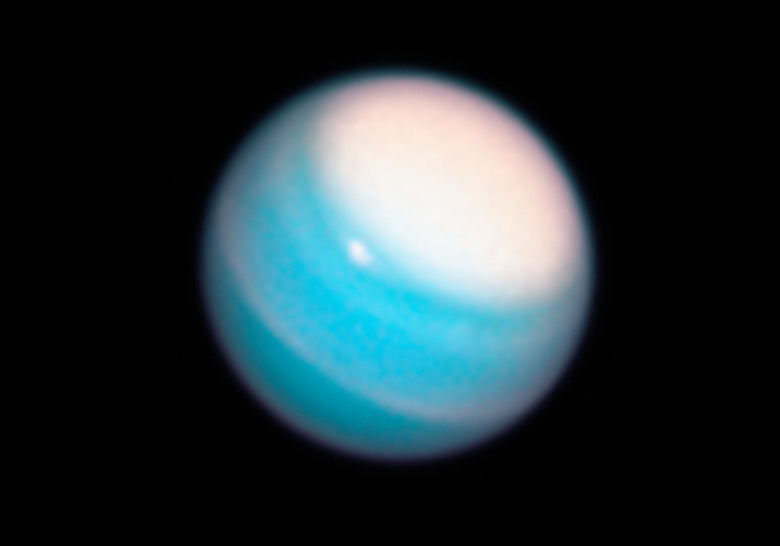Uranus May Leak Gas Into Space At Least Once A Day
- A new study that modeled Uranus and its magnetosphere suggest that, when the planet is at the correct angle, solars winds can enter the magnetosphere and blow through.
- The findings seem to match observations made by Voyager 2 decades ago.
- Additional research would be required to confirm the findings.
Uranus is weird. It's unlike any other planet in our solar system for a number of reasons, but its most bizarre feature is that it rotates at a roughly 90-degree angle to all the other planets. Scientists believe that its strange orientation is due to an impact that the planet sustained early in its life, but they're just beginning to understand how this particular circumstance is affecting the planet on a day-to-day basis.
In a new paper published in the Journal of Geophysical Research, scientists explain that, based on models of the planet and its magnetosphere, it's likely that the solar wind streaming from the Sun actually enters and flows through the magnetosphere rather than flowing around it.
Today's Best Deal
The planet itself is rotated 98 degrees with regard to its orbit of the Sun. Its magnetosphere, which is the bubble-like shield surrounding the planet is rotated approximately 60 degrees off of its rotational axis. It's the strange combination that may allow for the outflow of particles from the Sun to slip inside of the magnetosphere, but it's not a constant flow.
"In order to study the coupling mechanism between the solar wind and the magnetosphere, we use a numerical model to simulate the global magnetosphere and to predict potential favorable reconnection locations," the researchers write. "We propose that a 'switch‐like' magnetosphere exists at Uranus in both equinox and solstice seasons, where the planetary rotation drives the interchange between an open magnetosphere and a closed magnetosphere each Uranus day. This periodic reconnection is predicted to occur upstream of the magnetopause, with a frequency that corresponds to the planetary rotation (once per 17.24 h)."
This unique combo may have additional effects as well, such as the possibility that the flow of particles produces an aurora that might be visible in the planet's skies.
It's incredibly difficult to confirm these findings because of how far away Uranus is from Earth. The planet sits much farther away from the Sun than our own world, and some of the best observations of Uranus are literally decades old, having come from the Voyager 2 spacecraft when it flew past the frosty planet on its way out of our solar system. However, the computer model of the planet, its magnetosphere, and the solar wind appear to support observations made by Voyager 2, and while we can't know for certain how accurate these findings are without embarking on a new observation campaign of Uranus, the data appears to line up.
